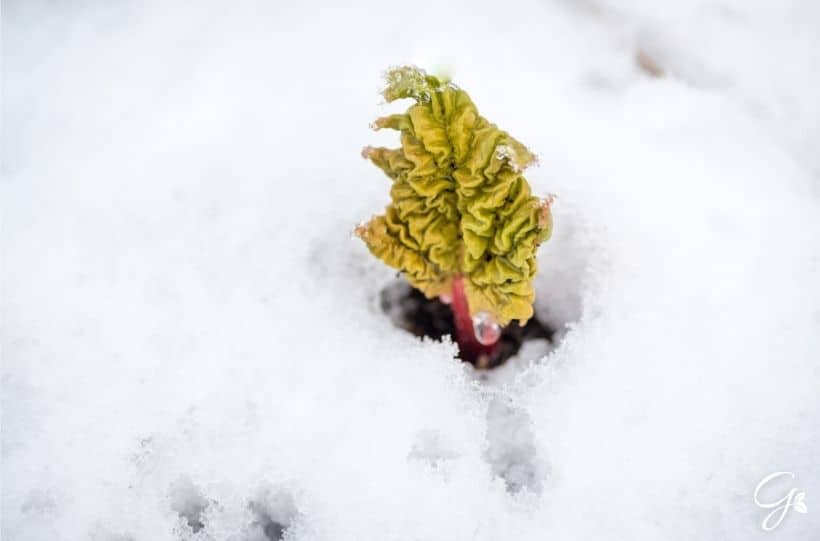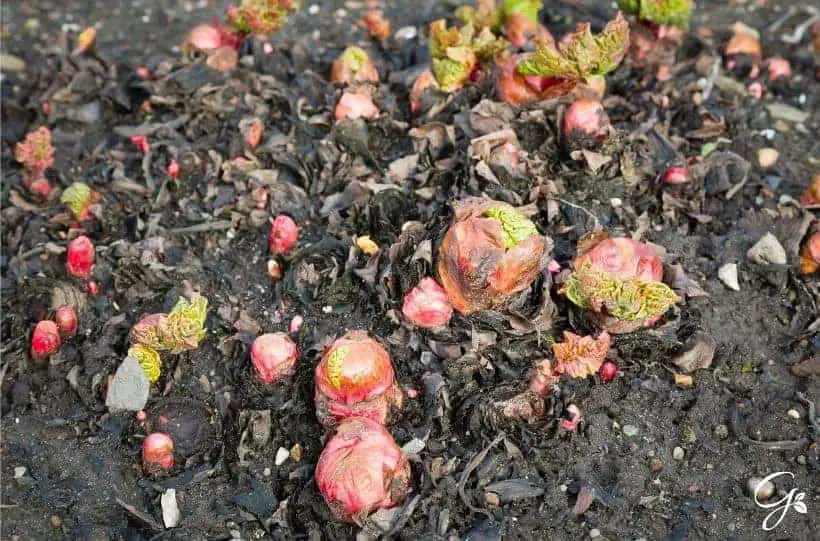Top Tips For Preparing Rhubarb Plants For Winter
Rhubarb is a perennial plant that is extremely hardy and can grow in most climates. Though it originates from Asia, it is now a popular vegetable grown all over the UK and America.
The stems are often used to make pies, crumbles, and jams. However, if this hardy plant is left to grow all year round, the vegetable’s taste decreases in quality and becomes bland and less tart.
Winter is the ideal time to enable rhubarb to rest ready for a successful harvest the following year. Many plants over the winter months naturally go into a state of dormancy, so it is ideal to encourage rhubarb to do the same.

Here are some top tips for preparing rhubarb plants for winter:
Firstly, you need to assess which growing zone you are in and this will help determine how to take care of your plant over winter.
As mentioned, rhubarb is a hardy perennial that does well in most climates. However, in order to encourage new, healthy growth the following season, rhubarb plants do need to go through a ‘chill’ period.
Rhubarb Grown In Mild Climates
If you live in a growing zone that does not experience cold winters, you will need to be more proactive in preparing rhubarb for winter.
You will need trim your rhubarb and dig up the crown. It will then need to be frozen for 7-9weeks and gradually readjusted to outside temperatures again.
This will force your plant to enter a period of dormancy allowing your rhubarb plant to rest. Once it ‘awakens’ and is planted back into the ground, it will focus its effort on growing and producing healthier stems.
Rhubarb Grown In Cold Climates
If you live in an area that does experience frosty winters, then you do not need to dig up your rhubarb.
In Autumn, allow the flowers to die and remove any old leaves from the stems.
You then need to cut back the stems to the crown. Stems can be frozen if you have too much to cook with immediately. The leaves are poisonous to consume but are safe to add to your compost heap due to the poisonous acid breaking down whilst decomposing.
The crown of your rhubarb plant can remain in the ground but does need some protection from the frost. Instead of using horticultural fleece, consider adding a thin layer of mulch such as straw or grass clippings.
A thin layer of mulch enables the crown to chill during winter, whilst accessing fresh air and necessary water.
Things To Consider
If your rhubarb plant is coming up to 5 or 6 years old, you may want to consider dividing your plant. Once they grow larger, they can become overcrowded and resources split making your plant not as efficient.
Splitting your plant, helps it to focus its growth, become stronger and healthier, along with providing you with more rhubarb plants.
You can split your rhubarb plant by removing the crown from the ground in winter after it has been harvested. Using a spade, cut the crown into smaller sections ensuring each section has a growing bud.
This is also an ideal time to check the health of your rhubarb crown and remove any that may be decaying.
Replant each section of the crown providing space between each. The following summer, you should have a larger supply of rhubarb.
Another consideration is ensuring your soil is suitable for your rhubarb during the winter months.
Rhubarb requires well-drained soil which is not left soggy. If the rhubarb crown sits in wet soil it can lead to rotting which means you will have to dispose of your rhubarb and start again.
Frequently Asked Questions
What do you do with rhubarb at the end of the season?
Rhubarb is ready to be harvested between April and July depending on the variety and when it was planted. It does need to go through a period of dormancy to thrive the following season, hence it is best to harvest all of your rhubarb stems.
If there is a surplus amount more than you need, you can chop and freeze rhubarb. Rhubarb can be used to make jams, pies, crumbles, and even salads.
Does rhubarb need protection from frost?
Rhubarb is frost-resistant and can still survive during cold winters. If left, it would continue to grow all year round, however, that leads to a lower quality harvest.
It is best to cut your rhubarb to the crown and then cover the crown with a light mulch. This ensures it can rest during the winter without overheating it.

If you are growing rhubarb and want to maintain your plant instead of starting again the following season, follow these top tips to prepare your rhubarb plant for winter.
These tips will help your rhubarb plant to grow healthy, strong, and produce more stems for you to use each year.
Due to rhubarb being a hardy perennial that is frost-resistant, it does not require a lot of ongoing care over the winter months. With these tips, you can easily ensure your rhubarb plant survives for the next growing season.
Looking for more tips to winterize your garden plants? Take a look at these posts:

